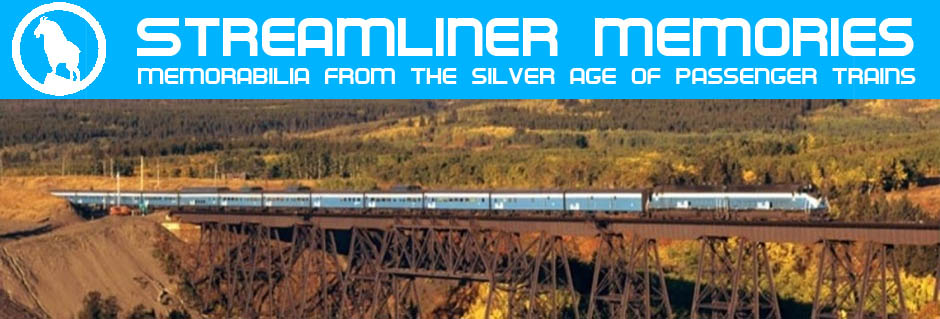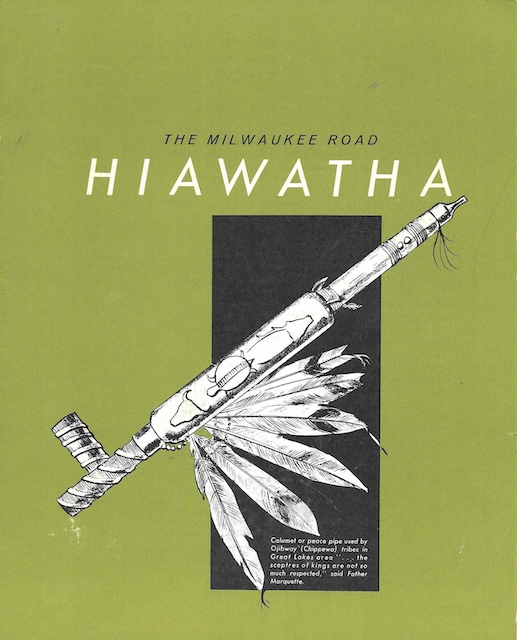The Milwaukee Road had some beautiful covers reminiscent of Native American designs for its Hiawatha menus. This menu offers full means with unspecified fish, old fashioned smothered steak, roast chicken, or cold meats with soup, bread, potatoes, vegetable, rolls, dessert, and beverage for $1. That was a pretty good deal considering the a la carte side offered the fish alone for 70¢ and the chicken alone for 60¢.
 Click image to download a 2.1-MB PDF of this menu, which was provided by Brian Leiteritz.
Click image to download a 2.1-MB PDF of this menu, which was provided by Brian Leiteritz.
The menu is undated, but it does say that B.J. Schilling was the superintendent of dining cars. It also has a plea from the “President’s Council on Food Famine” to conserve “bread, fats and oils.” Concerns about food famines reached a peak in 1946, which is also when B.J. Schilling held that job, so I’m dating this menu to that year.
 Click image to download a 790-KB PDF of this envelope, which was provided by Brian Leiteritz.
Click image to download a 790-KB PDF of this envelope, which was provided by Brian Leiteritz.
The bottom of the left side of the menu says, “Steward will furnish an envelope for patron desiring to mail this menu.” Above is an envelope that might have been provided.
 Click image to download a 1.3-MB PDF of this menu.
Click image to download a 1.3-MB PDF of this menu.










